Inspired by her own adventures in growing food led an Upper Lynn mom to take on the mission of providing local, quality produce to North Vancouver homes. All it took was meeting the right farmer to help launch Valley to Shore Harvest Boxes.
Planting seeds
Healthy living and eating has always been a priority for Dana Dykema. When possible she buys local or grows her own food.
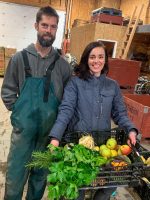 “It’s been a journey of years for me changing how I think about food,” she said. “We don’t go on extravagant holidays because I have to feed our eating habit of buying farmer direct.”
“It’s been a journey of years for me changing how I think about food,” she said. “We don’t go on extravagant holidays because I have to feed our eating habit of buying farmer direct.”
That care for her own family led to Dykema to seek out a farm partner and launch a small business this past fall.
“I was looking on Instagram and went down a rabbit hill when I saw the name Local Harvest. I thought: ‘Oooo I like that.’ I saw the trailer for a gardening course,” she said.
Hooked by the quality of the online course, soon Dykema was making the trip out regularly to Dan Oostenbrink’s market garden farm.
“I was going out to the [Fraser] Valley a lot to pick up what was seasonally available, to pick cherries, ” she said. “I have been frustrated with the lack of Fraser Valley produce on the North Shore. It’s so good and it’s right there. Why isn’t it in our stores?”
As she got to know Oostenbrink, and his family, and to experience the quality foods he grows, Dykema felt compelled to offer it to other families who might not have the time to source high-quality food.
More than a box of vegetables
Last fall Dykema tested the CSA (community supported agriculture) waters by organizing a veggie box delivery as a Thanksgiving fundraiser for Upper Lynn Elementary. Students got to learn about local food security, visit the farm first hand and help pack the boxes. The interest in that project was the proof of concept needed to launch Valley to Shore. In the weeks since Dykema has been making the trek to Chilliwack and returning with a car full of produce.
“It’s more than just delivering a product to the North Shore,” she said. “There is a lot more in what he gives in a harvest box than a typical CSA. It tastes better. There is nothing that compares. It’s also about education and building community around this food and seasonal eating.”
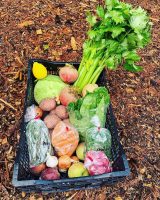 Dykema takes the time to offer inspiration and information with each box. Her social feeds chronicle the dishes she cooks for her family and later this month Dykema will be launching her website, valleytoshore.com, where there will be recipes, blog posts and more.
Dykema takes the time to offer inspiration and information with each box. Her social feeds chronicle the dishes she cooks for her family and later this month Dykema will be launching her website, valleytoshore.com, where there will be recipes, blog posts and more.
“Because of the way [Dan] farms there is a large variety of foods available throughout the year,” she said. “Some of the ingredients are new to people so it’s a culinary adventure.”
Some items in the Harvest Boxes might come as a surprise. Those lucky enough to grab a Christmas box were surprised with Fraser Valley grown ginger and lemons – items more typically imported from China or South America.
“Traditionally any lemon you get at a store has been sprayed with who knows what. This lemon is pure good food,” said Dykema. “The food tastes better than anything you find at the grocery stores. It’s picked at peak freshness – not picked before so it can travel thousands of miles and sprayed with preservatives. It is often picked as I am putting boxes together.”
Local Harvest, like a handful of other Fraser Valley Farms, is not officially organic. Having chosen to invest in organic farming practices but not the bureaucracy to get certified. In addition to organic practices, Local Harvest uses no sprays of any kind, as well as regenerative practices. Regenerative gardening also considers the emissions and waste when working the land.
“Knowing Dan, how he farms with the practices he uses brings me a lot of comfort,” said Dykema. “Being a farmer is not easy. People will look at the box and think $65 is a lot of money but I think we are valuing quality and responding to the value of people’s hard work and caring environmental choices. Society wants quick and easy convenience but that bottom dollar idea is bringing bottom quality.”
The past couple of years have been incredibly challenging for Local Harvest. The covid pandemic has limited workers (Dykema said this is a three-fold issue – limited migrant workers means stretching local workers thinner, no students applied to work the past summer versus the typical 100 applications Oostenbrink would get and income programs lead to more part-time workers instead of full farming season help). And then there is the weather. November’s devastating floods were felt throughout the Fraser Valley.
“I think it has shown us how important these farms are,” said Dykema. “I was making a six-hour round trip to prepare the boxes during the worst of the floods.”
Seasonal abundance
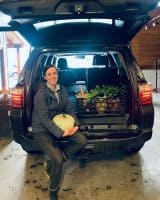 The winter is the slow time for harvesting in the Fraser Valley. Dykema and Oostenbrink are putting together one more box for a Jan. 18th delivery before taking a break until the Spring. Boxes are $65 and can be ordered by sending an etransfer to [email protected]. Boxes are then picked up Tuesday evenings and Wednesdays at Dykema’s Upper Lynn home. In addition to North Shore customers, she has people come from Vancouver and Richmond to get their share.
The winter is the slow time for harvesting in the Fraser Valley. Dykema and Oostenbrink are putting together one more box for a Jan. 18th delivery before taking a break until the Spring. Boxes are $65 and can be ordered by sending an etransfer to [email protected]. Boxes are then picked up Tuesday evenings and Wednesdays at Dykema’s Upper Lynn home. In addition to North Shore customers, she has people come from Vancouver and Richmond to get their share.
“I love being hospitable and this is a way to do that by introducing people to a farmer and showing them a different way to take care of their families,” said Dykema. “I can’t invite all these people to my house and cook for them but I can help care for their families.”
She hopes in the spring to be able to offer 100 boxes a week. Dykema will launch a “taster” box in mid-late April, with hopes to kickoff the season in May. Details will be on her website (launching soon) and her Facebook and Instagram.
“These dollars stay in the community, support local farm families and in return, I get nutrient-dense foods to feed my family.”
Looking for more?
There’s always something fun and exciting happening in Lynn Valley. Check out our Community Events Calendar or learn more about Local Activities, Mountain Biking or Hiking and Walking Trails.

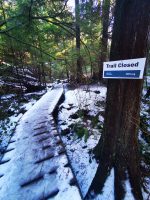 “It’s such a great trail,” said Graydon. “It is a beautiful nature trail and a great fitness trail. From where I live on Mountain Hwy, it’s part of the perfect five-kilometre loop. You see all kinds of people on it from kids to dog walkers. It has the equivalent [elevation] to more than 30 flights of stairs so it’s really beautiful and it’s like a gym workout.”
“It’s such a great trail,” said Graydon. “It is a beautiful nature trail and a great fitness trail. From where I live on Mountain Hwy, it’s part of the perfect five-kilometre loop. You see all kinds of people on it from kids to dog walkers. It has the equivalent [elevation] to more than 30 flights of stairs so it’s really beautiful and it’s like a gym workout.”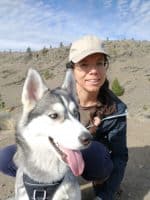 “This is a
“This is a 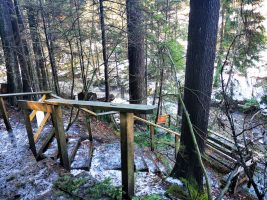 While the DNV understands why the erosion is ongoing and presents a safety issue. The repair plan is not as well-defined and challenged by fisheries habitat.
While the DNV understands why the erosion is ongoing and presents a safety issue. The repair plan is not as well-defined and challenged by fisheries habitat.
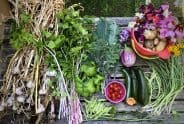



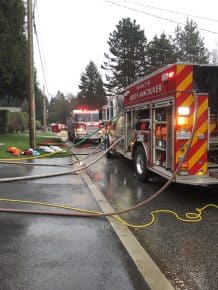 “With covid, it has been a lot harder. In normal years we would be in the schools doing presentations, we would be out at community gatherings and events,” she said. “There are these limiting factors that reduce the dialogue on what preparedness looks like.”
“With covid, it has been a lot harder. In normal years we would be in the schools doing presentations, we would be out at community gatherings and events,” she said. “There are these limiting factors that reduce the dialogue on what preparedness looks like.” 
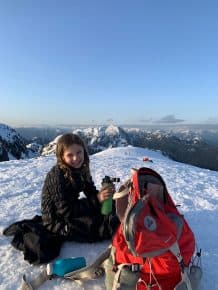 In March, before her injury, Reilly was getting excited about ‘peak bagging’ – that is the hobby of hiking to summit as many peaks as possible. The south coast has a number of informal groups and challenges encouraging people to get outside and active. In the early season with snow still on the ground, she reached three summits. The idea of continuing the challenge as part of her recovery led Reilly to launch her “
In March, before her injury, Reilly was getting excited about ‘peak bagging’ – that is the hobby of hiking to summit as many peaks as possible. The south coast has a number of informal groups and challenges encouraging people to get outside and active. In the early season with snow still on the ground, she reached three summits. The idea of continuing the challenge as part of her recovery led Reilly to launch her “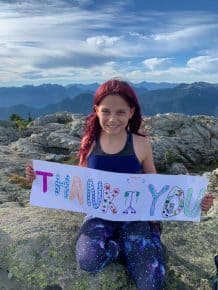 For Reilly, the key motivation was her
For Reilly, the key motivation was her 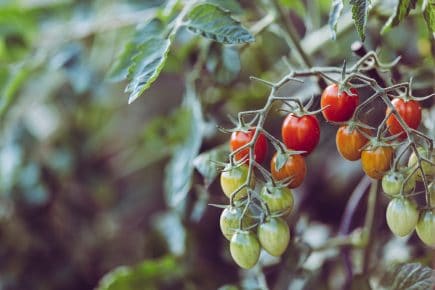
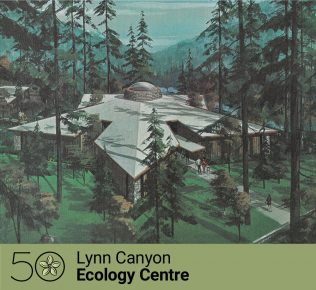 As British Columbia looked to mark its centennial in 1971, the government offered grants for community projects and celebrations. The District of North Vancouver was feeling ambitious and proposed one of the largest projects in BC: an Ecology Centre at Lynn Canyon, said Isobel Rennie, graphics and display technician for the centre.
As British Columbia looked to mark its centennial in 1971, the government offered grants for community projects and celebrations. The District of North Vancouver was feeling ambitious and proposed one of the largest projects in BC: an Ecology Centre at Lynn Canyon, said Isobel Rennie, graphics and display technician for the centre. 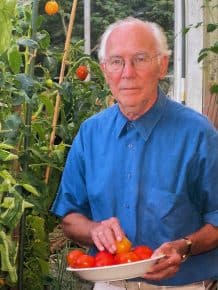
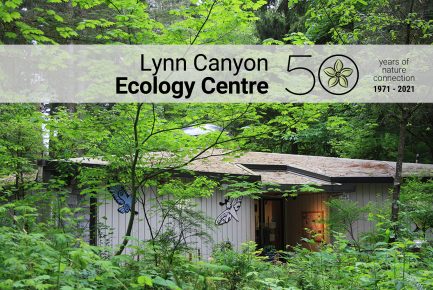 Join the Ecology Centre Saturday, Oct. 2 – exactly 50 years from opening day:
Join the Ecology Centre Saturday, Oct. 2 – exactly 50 years from opening day: 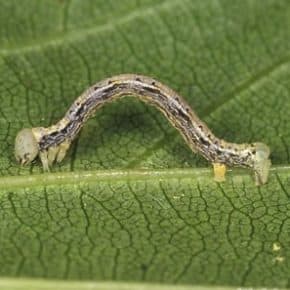 “What we know is the ability to recover is strongly linked to the amount of defoliation and so we are seeing that if trees are completely defoliated there is a lower chance of recovery,” he said. “The other problem is that if the tree was affected last year, its reserve would be depleted. If this year it is again defoliated, that depletes its reserves again and it may not produce foliage next year and it may die.”
“What we know is the ability to recover is strongly linked to the amount of defoliation and so we are seeing that if trees are completely defoliated there is a lower chance of recovery,” he said. “The other problem is that if the tree was affected last year, its reserve would be depleted. If this year it is again defoliated, that depletes its reserves again and it may not produce foliage next year and it may die.” 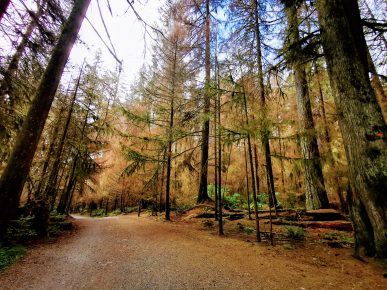 Our mountainside community relies on the trees to keep the forest where it is – on the hillsides. The roots of healthy trees retain the soils that help bushes and younger plants grow – continuing the cycle.
Our mountainside community relies on the trees to keep the forest where it is – on the hillsides. The roots of healthy trees retain the soils that help bushes and younger plants grow – continuing the cycle. 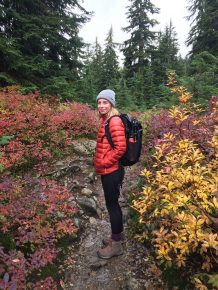
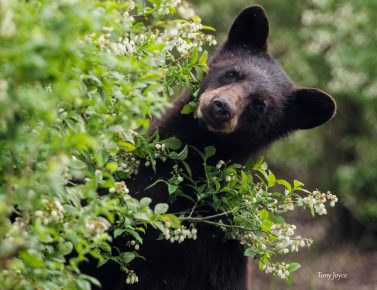
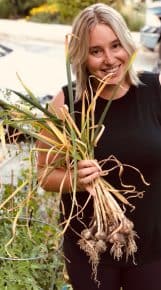 “I wanted to do it last year but I didn’t have a purpose beyond brightening up the days,” said Stack, a mom and behaviour analyst supporting children with Autism Spectrum Disorder. “Over the holidays I was thinking of a plan to donate the proceeds. I have a friend who has been supporting seniors in care homes through the pandemic and she inspired me and helped me think of it from a different perspective of what I could do and where the money could go. When I got the plan in place, I got really motivated to get started.”
“I wanted to do it last year but I didn’t have a purpose beyond brightening up the days,” said Stack, a mom and behaviour analyst supporting children with Autism Spectrum Disorder. “Over the holidays I was thinking of a plan to donate the proceeds. I have a friend who has been supporting seniors in care homes through the pandemic and she inspired me and helped me think of it from a different perspective of what I could do and where the money could go. When I got the plan in place, I got really motivated to get started.”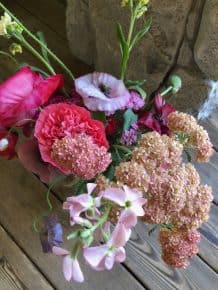 Eleven years into her self-education Stack loves getting her hands dirty.
Eleven years into her self-education Stack loves getting her hands dirty.